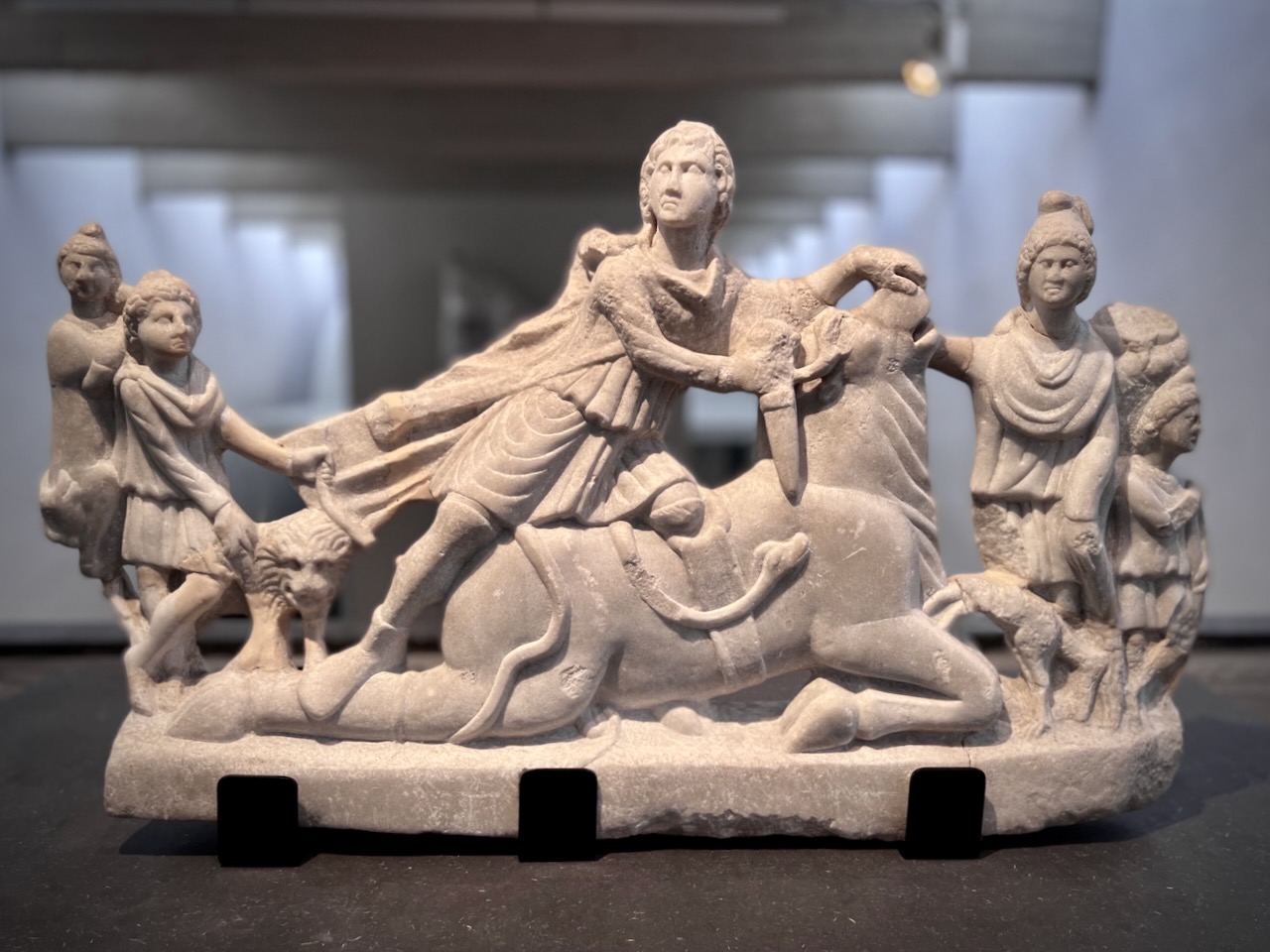Tauroctony relief of Sarmizegetusa
The full article is reserved for our members.
Log in or create a free account to access the entire site.
At the centre, Mithras, larger than the others, stands blocking the bull with his left knee, while holding it by the nostrils with his left hand and stabbing it in the throat with his right. The god has shoes, wears a Phrygian cap, and is dressed in a short tunic
…
